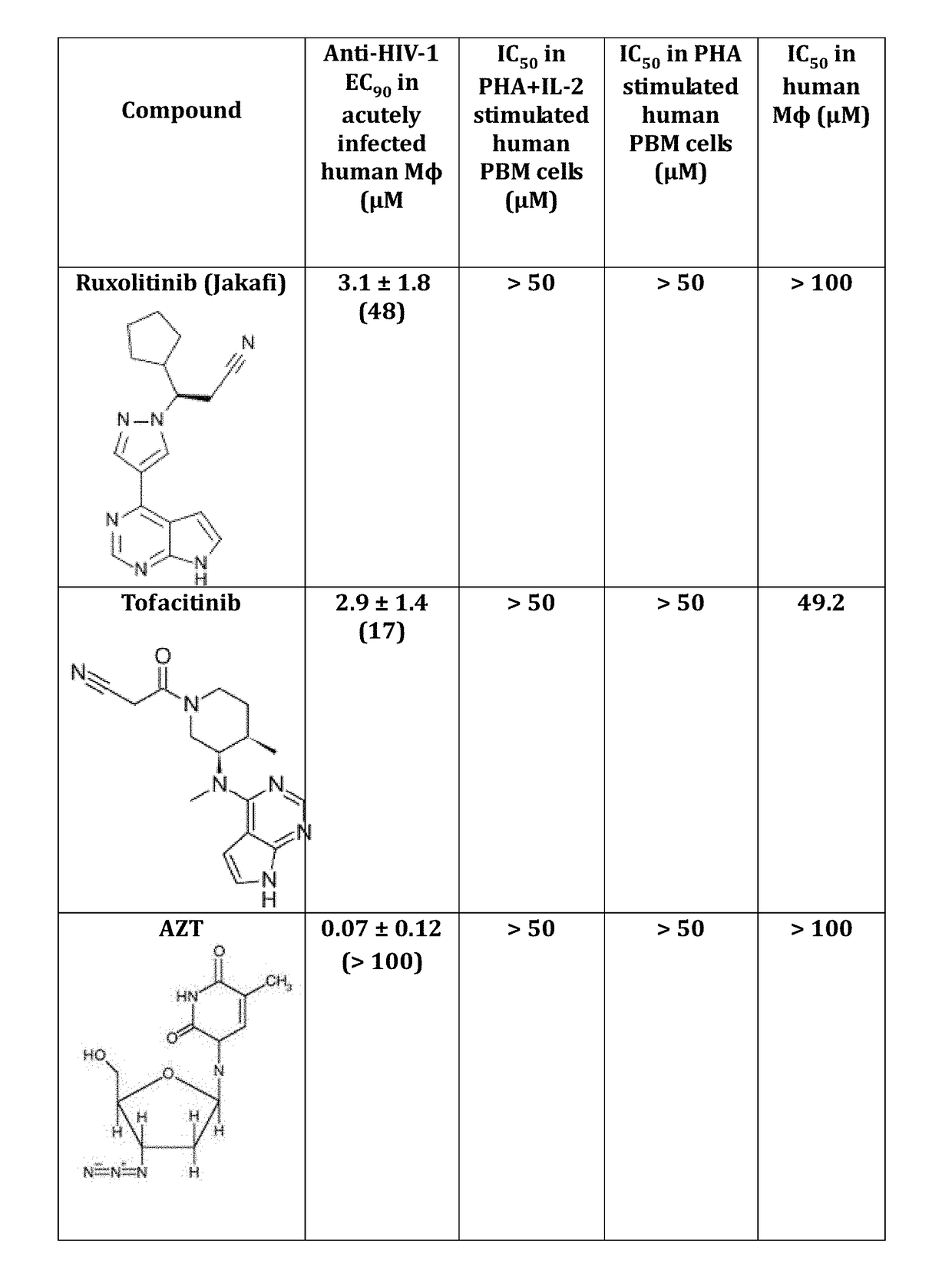Use of trem-1 inhibitors for treatment, elimination and eradication of hiv-1 infection
a technology of trem-1 inhibitors and inhibitors, which is applied in the direction of viruses/bacteriophages, biochemistry apparatus and processes, peptides/protein ingredients, etc., can solve the problems of minimizing the ability of viruses to adapt to the reverse transcriptase, and not being supportive of productive viral replication, so as to reduce inflammation
- Summary
- Abstract
- Description
- Claims
- Application Information
AI Technical Summary
Benefits of technology
Problems solved by technology
Method used
Image
Examples
example 1
ative Screening Procedures for Determining the Effectiveness of a Potential TREM-1 Inhibitor
[0547]Compounds can be screened for their ability to inhibit TREM-1, for example, using the screening methods disclosed in EP 2555789 A1. These methods can be used for antibodies, peptides, aptamers, small molecules, and the like. The methods involve measuring, or qualitatively or quantitatively detecting, the competition of binding of a candidate compound to the receptor with a labeled competitor (e.g., an antagonist).
[0548]In one particular embodiment, the screening method involves:
[0549]a) providing a plurality of cells expressing the TREM-1 ligand protein and cells expressing the TREM-1 protein:
[0550]b) incubating these cells with a candidate compound (including proteins, peptides, antibodies, aptamers, and small molecules);
[0551]c) determining whether the candidate compound binds to the TREM-1 ligand protein; and
[0552]d) selecting those candidate compounds that inhibit the TREM-1 / TREM-1 ...
example 2
n of TREM-1 Inhibitors to Conventional Antiretroviral Therapy
[0556]Current first line highly active antiretroviral therapy (HAART) for the treatment of human immunodeficiency virus (HIV-1) infections combines two nucleoside reverse transcriptase inhibitors (NRTI) together with either a protease inhibitor (PI) or non-nucleoside reverse transcriptase inhibitor (NNRTI). These drug combinations have markedly decreased mortality and morbidity from HIV-1 infections in the developed world.
[0557]Existing therapies cannot eradicate HIV-1 infection because of the compartmentalization of the virus and its latent properties. Therefore, chronic therapy remains the standard of care for the foreseeable future. Although HAART regimens are selected in part to minimize cross resistance, and thereby delay the emergence of resistant viruses, all regimens eventually fail, due primarily to lack of adherence to strict regimens, delayed toxicities and / or the emergence of drug-resistant HIV-1 strains, makin...
example 3
rial Toxicity Assays in HepG2 Cells
[0582]i) Effect of the TREM-1 Inhibitors Described Herein on Cell Growth and Lactic Acid Production:
[0583]The effect on the growth of HepG2 cells can be determined by incubating cells in the presence of 0 μM, 0.1 μM, 1 μM, 10 μM and 100 μM drug. Cells (5×104 per well) were plated into 12-well cell culture clusters in minimum essential medium with nonessential amino acids supplemented with 10% fetal bovine serum, 1% sodium pyruvate, and 1% penicillin / streptomycin and incubated for 4 days at 37° C. At the end of the incubation period the cell number was determined using a hemocytometer. Also taught by Pan-Zhou X-R, Cui L, Zhou X-J, Sommadossi J-P, Darley-Usmer V M. “Differential effects of antiretroviral nucleoside analogs on mitochondrial function in HepG2 cells” Antimicrob. Agents Chemother. 2000; 44: 496-503. To measure the effects of the compounds on lactic acid production, HepG2 cells from a stock culture can be diluted and plated in 12-well cul...
PUM
| Property | Measurement | Unit |
|---|---|---|
| time | aaaaa | aaaaa |
| concentration | aaaaa | aaaaa |
| pressures | aaaaa | aaaaa |
Abstract
Description
Claims
Application Information
 Login to View More
Login to View More - R&D
- Intellectual Property
- Life Sciences
- Materials
- Tech Scout
- Unparalleled Data Quality
- Higher Quality Content
- 60% Fewer Hallucinations
Browse by: Latest US Patents, China's latest patents, Technical Efficacy Thesaurus, Application Domain, Technology Topic, Popular Technical Reports.
© 2025 PatSnap. All rights reserved.Legal|Privacy policy|Modern Slavery Act Transparency Statement|Sitemap|About US| Contact US: help@patsnap.com



